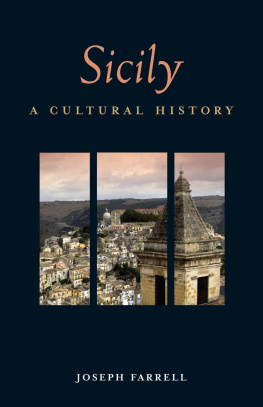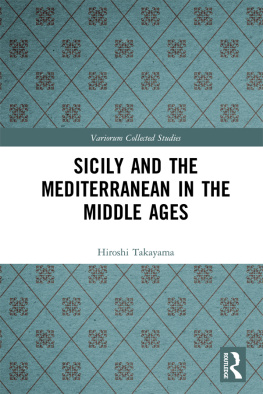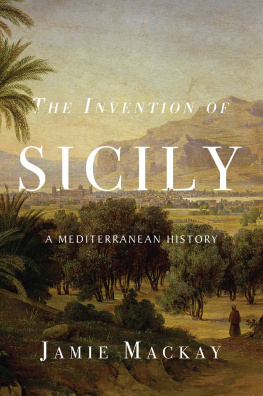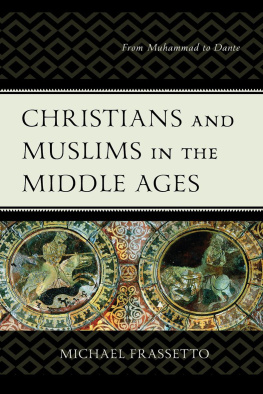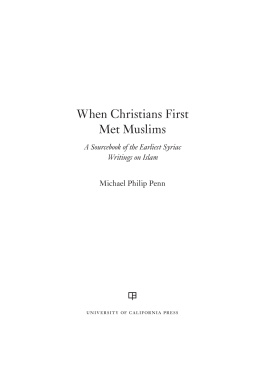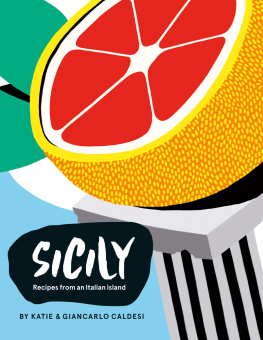ACKNOWLEDGMENTS
Like the many travelers whose voyages form the basis for this book, I have been on a long and sometimes perilous journey while bringing this work to completion. This is the type of trip that cannot be undertaken alone, and along the way I have benefited from the help, advice, support, and friendship of countless individuals and institutions.
While it began at the University of Notre Dame, this work matured during my time at the University of Texas at Arlington and the University of New Mexico. My many friends and colleagues at those institutions have been of significant assistance to me in my travels. Among others, I particularly thank Justine Andrews, Cathleen Cahill, Christine Caldwell Ames, Paul Cobb, Caroline Goodson, Tim Graham, Penny Ingram, Marie Kelleher, Courtney Luckhardt, Tom Noble, Michael A. Ryan, Andrew Sandoval-Strausz, Alan Stahl, Julia Schneider, John Van Engen, and Robin Vose. I could do nothing without the cheerful assistance of the administrative staff of the UNM History DepartmentYolanda Martinez, Barbara Wafer, Dana Ellison, and Hazel Mendoza-Jayme. My parents, Terry and Catherine Davis, and my parents-in-law, Bill and Linda Secord, have encouraged, prodded, loved, and supported me throughout. My parents taught me that I could do anything I wanted with my life, gave me opportunities that they themselves had not had, and have always taken an interest in my workall of which I appreciate more than words can express.
My editors at Cornell University Press, both Peter Potter and Mahinder Kingra, have been unfailingly helpful and insightful readers of this work. Bethany Wasik and the rest of the team at Cornell University Press have been wonderful to work with and quick with responses to my many questions. I thank Romney David Smith for the beautiful maps. The two outside readers for the press, Clifford Backman and Karla Mallette, provided helpful observations and suggestions that significantly improved the book. All of its shortcomings remain my own responsibility.
I have also profited from being a member of several dynamic and productive intellectual communities, notably the medievalists of the University of Notre Dame, the History Department and the Institute for Medieval Studies at the University of New Mexico, and the broad spectrum of Mediterranean scholars involved in the Mediterranean Studies NEH Summer Institute and the Mediterranean Seminar. Funding for my research has come from the Medieval Academy of America, the National Endowment for the Humanities, the University of Notre Dame, the University of Texas at Arlington, and the University of New Mexico. I could not have done this work without access to great libraries: I have relied upon the collections at the University of Notre Dames Hesburgh Library (in particular the Medieval Institute library and its librarian, Dr. Julia Schneider), Princeton Universitys Firestone Library, and the University of Chicagos Regenstein Library, as well as the interlibrary loan department at the University of New Mexico. Likewise, I have utilized the Cambridge Digital Library of Geniza texts by Cambridge University Library and the transcriptions of Geniza documents by the Princeton Geniza Project. I thank Hereford Cathedral (particularly its librarian Rosemary Firman and the library and archives assistant James North), the British Library, the University of Oxfords Bodleian Libraries, and the University of Cambridges Fitzwilliam Museum for permission to reproduce the images included herein.
A special version of thanks is due to Olivia Remie Constable. Remie died before the book reached its final form, but it has been shaped in countless ways both by her presence in my life and by her absence. I can only hope that she would have been proud of this small contribution to the study of the medieval Mediterranean world that she loved so much and did so much to advance.
My greatest thanks are due to the two people who travel with me not only in scholarship but also in life, my husband, Jon, and my daughter, Sage. Jon is due double thanks, as he has not only loved and supported me throughout the process of writing and rewriting this book (at times virtually solo parenting while I wrote, despite his own pressing deadlines) but also read nearly every word of it and saved me from countless instances of my own convoluted thought processes and sentence structures. Even more importantly, he is wonderfulas a partner, a scholar, and a father to our amazing daughter. There is no one else with whom I would want to sail the seas of life, love, and the study of the Middle Ages.
ABBREVIATIONS
AASS | Acta Sanctorum |
BAS Arabic | Biblioteca arabo-sicula, ossia raccolta di testi Arabici che toccanola geografia, la storia, le biografie e la bibliografia della Sicilia, testiarabici. Edited by Michele Amari. Leipzig: F. A. Brockhaus, 18571887. 2nd revised ed. by Umberto Rizzitano. 2 vols. Palermo: Accademia Nazaionale di Scienze Lettere e Arti, 1988. |
BAS Ital. | Biblioteca arabo-sicula, ossia raccolta di testi Arabici che toccano la geografia, la storia, le biografie e la bibliografia della Sicilia, versione italiana. Edited by Michele Amari. 2 vols. Turin: E. Loescher, 18801889. 2nd revised ed. by Umberto Rizzitano et al. 3 vols. Palermo: Accademia Nazaionale di Scienze Lettere e Arti, 19971998. |
Ben-Sasson | Ben-Sasson, Menahem. The Jews of Sicily 8251068: Documents and Sources. Jerusalem: Ben-Zvi Institute, 1991. |
BGA | Bibliotheca Geographorum Arabicorum. 8 vols. Edited by M. J. de Goeje. Leiden: E. J. Brill, 18701894. |
BHG | Bibliotheca Hagiographica Graeca. 3rd ed. Edited by Franois Halkin. 3 vols. Subsidia Hagiographica 8a. Brussels: Socit des Bollandistes, 1957. Reprinted 1986. |
BHL | Bibliotheca Hagiographica Latina. Edited by Socit des Bollandistes. Subsidia Hagiographica 6. Brussels: Socit des Bollandistes, 18981901. |
EI2 | Encyclopdia of Islam. 2nd ed. Edited by P. J. Bearman, Th. Bianquis, C. E. Bosworth, E. van Donzel, W. P. Heinrichs et al. 12 vols. Leiden: E. J. Brill, 19602005. |
LP | Liber Pontificalis. Edited by L. Duchesne. Paris: E. de Boccard, 19551957. |
Medit. Soc. | Goitein, S. D. A Mediterranean Society: The Jewish Communities ofthe Arab World as Portrayed in the Documents of the Cairo Geniza. 6 vols. Berkeley: University of California Press, 19671993. |
MGH | Monumenta Germaniae Historica |
ODB | The Oxford Dictionary of Byzantium. Edited by Alexander P. Kazhdan et al. 3 vols. New York: Oxford University Press, 1991. |
PG | Patrologia Graeca |
PL | Patrologia Latina |
Simonsohn | Simonsohn, Shlomo. The Jews in Sicily. Vol. 1, |


